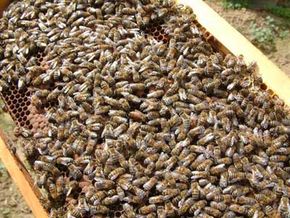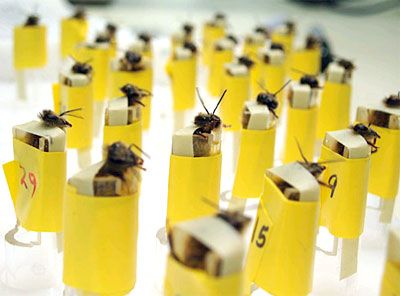A honeybee starts the honey making process by visiting a flower and gathering some of its nectar. Many plants use nectar as a way of encouraging insects (bees, wasps, butterflies, etc.) to stop at the flower. In the process of gathering nectar, the insect transfers pollen grains from one flower to another and pollinates the flower.
Most flower nectars are similar to sugar water -- sucrose mixed with water. Nectars can contain other beneficial substances as well. To make honey, two things happen:
Advertisement
- Enzymes that bees produce turn the sucrose (a disaccharide) into glucose and fructose (monosaccharides). See How Food Works for a discussion of food enzymes and saccharides.
- Most of the moisture has to be evaporated, leaving only about 18-percent water in honey.
Here is a very nice description of the enzyme process:
An enzyme, invertase, converts most of the sucrose into two six-carbon sugars, glucose and fructose. A small amount of the glucose is attacked by a second enzyme, glucose oxidase, and converted into gluconic acid and hydrogen peroxide. The gluconic acid makes honey an acid medium with a low pH that is inhospitable to bacteria, mold, and fungi, organisms we call microbes, while the hydrogen peroxide gives short-range protection against these same organisms when the honey is ripening or is diluted for larval food. Honey bees also reduce the moisture content of nectar, which gives it a high osmotic pressure and protection against microbes./
This page gives a very nice description of the evaporation process:
The effect is to make honey a very stable food. It naturally resists molds, fungi and other bacteria, allowing it to last for years without refrigeration!
Advertisement



